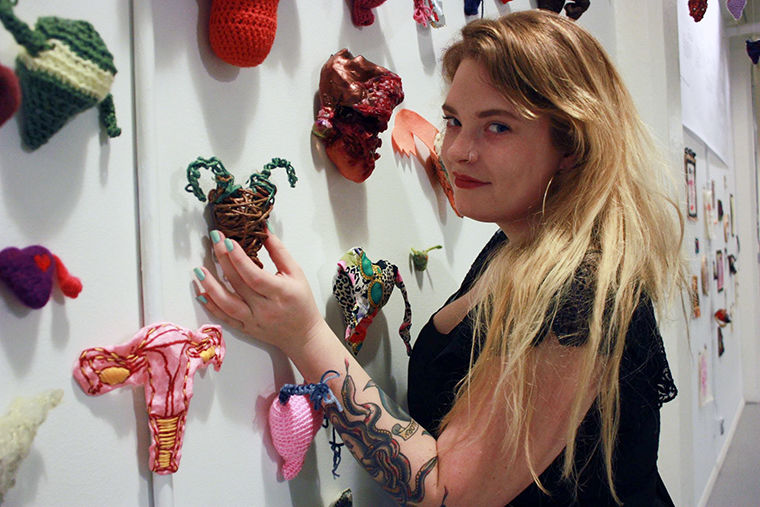Notable Native: Laura Kinter
April 21, 2018
As the associate director of Awakening, a nonprofit providing an artistic outlet for sexual assault survivors, 27-year-old Laura Kinter pitches in any way she can, whether it is planning major events or doing outreach across the country.
Awakening, 4001 N. Ravenswood Ave., opened eight years ago and showcases 10–30 works of art at one time. Along with providing an emotional escape for sexual assault survivors, the gallery partners with crisis centers and publishes a literary magazine.
Kinter spoke with The Chronicle about life at Awakening, and the role the gallery plays in recovery from sexual assault.
THE CHRONICLE: Who can submit art to the gallery?
LAURA KINTER: We encourage survivors of sexual violence and those who were affected by sexual violence to submit art. We encourage people who have not experienced this to attend a concert or reading so they can see the art and hear these survivor’s stories.
If someone wants to purchase something, we put them in contact with the artist. But selling art is not the main point of Awakening.
What are some of your responsibilities at Awakening?
I oversee a bit of everything, mainly event planning, marketing and developing. It takes a village to put things on.
We rely on our board members to help coordinate everything along with volunteers. The need, audience and survivors are out there. It is important to be professional and have programming for everyone.
Why is it important to showcase this artwork?
It is easy to write a post, a hashtag or share an article and feel these issues are getting more attention. But the truth is, that’s hardly engagement … the responsibility remains on the survivors to tell their story and fight for their rights.
Awakening offers a different perspective than the usual news coverage you may see. Seeing a painting about someone’s sexual trauma is different from reading an article. Different parts of your brain activate, and the piece sticks with you. The art tells an amazing story while providing a slice of what it was like to go through the artist’s trauma.
Every piece of art is accompanied by a statement from the survivor on how that piece helps them overcome trauma. Our space is more than just an art gallery—it is a community for survivors to come and find others who share similar experiences. Awakening is also a place to come be inspired by art if the survivors have never tried making art before. If we just had this gallery and the events for the survivors, we would only be doing half our job. People have to see the art and listen to the stories.
When people come to see the art, hear the concerts and read the literary magazine, that makes the artist feel supported, believed in and heard, when they are used to a world that does not want to listen to what happened to them.
What would you like to see Awakening do in the future?
I would love to see us grow in every way possible, whether that be funding so we may sustain and grow programing and offer more events and resources to survivors or grow our pool of volunteers and board members.
I would love to do more preventative work in the future. I would love to work with children more and go into schools. I consider the people we’ve helped anyone that comes in through our doors, which might be too many to count. It feels wonderful to help these artists convey their messages to as many people as I can.
How does the gallery help survivors?
A lot of these artist have taken their artwork to be exhibited at other locations but were rejected because of the content, which can feel like a personal attack.
Not only does it feel as if your artwork’s not validated, but it feels like your story is not being validated either. It is incredibly empowering for someone to accept your art work even though it is about a taboo subject. At Awakening, artists are able to watch people find beauty in their artwork. That can make all the difference.
What’s one of the most compelling stories of the gallery’s artists?
There was one artist from Canada and she found Awakening on social media. She was struggling to finish a series of five canvasses she was making herself. She hit this roadblock and did not know what to do. When she found us on social media, we began corresponding. Not only was she inspired to finish the piece, but she drove down to our gallery on the anniversary of her rape and told us the whole story. Now it is permanently displayed in the gallery.








